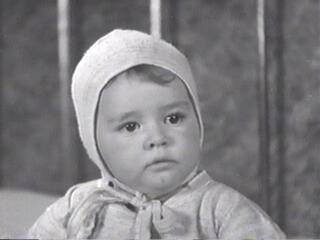
Marketing to the Masses: Amorality and Civil Anarchy by Corporations
Within modern corporate culture there exists a beautifully regimented theocracy - the God of this corporate governance is Money. All other considerations are subjugated to the Primacy of Money. Here are a few books I've read in recent months (and one movie) which expand on this theme:
1. Born to Buy : The Commercialized Child and the New Consumer Culture by Juliet B. Schor
2. Fast Food Nation: The Dark Side of the All-American Meal by Eric Schlosser
3. Super Size Me - "documentary" by Morgan Spurlock
4. The Laws of Choice by Eric Marder
Juliet Schor, author of The Overspent American: Why We Want What We Don't Need and Overworked American: The Unexpected Decline of Leisure, put out Born to Buy last year which completes her trilogy on on the American Middle-Class Malaise. Speaking of threes, the triumvirate of Middle-Aged Women Moping about the Malaise of the American Middle Class are Barbara Ehrenreich, Elizabeth Warren, and Juliet Schor.



I talked a little bit about Ehrenreich's books here. I discussed Elizabeth Warren's book briefly here. Schor does a good job reporting about her analysis of American middle-class problems. Her current book puts forth the thesis that corporate amorality has damned the recent generations of Americans to behave almost as automatons enslaved by Materialism. She interviews marketing executives past and present, parents, children, ad-men and documents research (her own as well as pre-existing) demonstrating the behavioral effects of such marketing on children as they grow up. She tries to refute the claim by marketers that "associations not causations" underlie the links between their marketing acts and the growing pestilence of fatness, stupidity, laziness, materialism, substance abuse, violence, and psychiatric disorders (anxiety and depression mainly). She claims her research on two cohorts around Boston (one affluent, the other inner-city poor) forges a sure connection, causality, between the marketing of products and such behavior by American kids. She decries the commercialization of the public school system with the expected diatribes, well researched. Starting initially with good intentions, she writes about how Advertisements have infiltrated the school systems compromising education and stealing large chunks of time daily. Channel One is again attacked, as they should be, and she talks briefly about the groundswell of opposition against Channel One (see Channel One Removal Kit).
She describes the chilling methods employed by Marketing companies in order to capture or seduce small children into becoming agents for their products. Particularly striking are the descriptions of the "Viral Marketing" techniques and the use of children as "spies" within their peer groups - e.g. the GIA (the girls intelligence agency) which infiltrates the typical suburban pajama slumber party of pre-teens with a school girl who has the assignment of obtaining a laundry-list of information from her school/classmates during the party, all for the marketing edification of corporate conglomerates like GAP, Levi-Strauss, etc. Also interesting is the evidence presented which show that large corporations now believe that it is to their benefit to market alcohol, cigarettes, and even such items as large appliances, automobiles to children more than to adults. Schor portrays us consumers as mostly pawns and victims, reminiscent of Elizabeth Warren's book The Two-Income Trap: Why Middle-Class Mothers and Fathers Are Going Broke. For the majority of Americans this may be true unfortunately.
Fast Food = Death
Eric Schlosser's Fast Food Nation is a tour de force of the fast-food industry, an excellent, entertaining, and fairly-well researched book which I wished I could make all 220 million or so adults in the US read.

He begins with the story of Carl Karcher, Richard and Maurice McDonald + Ray Kroc describing the birth of the hamburger industry in California in the early 1950s. He covers the marketing to kids including examples of outrageous public school marketing plans just as Schor did and draws parallels between Ray Kroc and Walt Disney - their early friendship during WWI, Kroc's early flirtation with Disney, later enmity, and the ironic posthumous partnerships of their companies. The overall theme of Schlosser's book would have to be Exploitation of the People by large corporations. He shows how franchisees are exploited by the big companies McDonald's, Subways, Burger Kings. He shows how high-school teenagers are exploited by the minimum-wage fast-food job market. He talks briefly about the fattening and the blighting of the health of the Nation and the World. He shows how Idaho potato farmers are exploited by the Ore-Idas, Simplot and Lamb Weston companies - he interviews the aged multi-billionare J.R. Simplot himself who grew his fortune by learning to dehydrate potatoes, then selling the idea to McDonalds. He shows how slaughter-house workers, mostly migrant workers, many illegals, are exploited, trashed, and discarded by the giant slaughterhouses like IBP and Conagra. The most striking parts of this book are the descriptions of the abattoirs in the midwest which he visits. He interviews many managers, workers - he describes routine amputations, decapitations, and workers' bodies falling into the machinery - the ongoing production of meat continuing nevertheless.

He describes the filth, chaos, and brazen anarchy in the meat-packing industry, the impotence of OSHA and all federal safety inspectors as the USDA is now controlled by the cattle industry (with the actual president of the cattle industry acting as the head etc.). He gives a thorough reporting of the Ecoli 0157:H7 contagion spreading throughout the country with emotional recounting of the deaths of six-year olds as told by their parents from eating spoiled hamburgers (remembering the Jack-in-the-Box incident in 1997 as well as the well-covered-up incidents involving McDonald's and Wendy's). As he writes on p197: "The medical literature on the causes of food poisoning is full of euphemisms and dry scientific terms...Behind them lies a simple explanation for why eating a hamburger can now make you seriously ill: There is shit in the meat." He includes one statement which seemed poorly researched (based on examining the "Notes" he includes in the back): he implies that Charles Gerba, microbiologist at Univ of Arizona found more fecal bacteria in the typical American sink than in the typical American toilet - he states that you'd be better off eating a carrot that you drop into a toilet than one that you drop into your kitchen sink. This may be true in your kitchen sink, but not in mine (in your face). In general, you'd have to conclude that he has an activist agenda against the Fast Food Industry and that he is unlikely to provide much positive information on this industry - nevertheless the information he provides is extremely entertaining, very important and very believable for the most part. He ends with a chapter on the globalization of the American fast-food industry and its portentious consequences.
Fast Food is Disgusting

Morgan Spurlock is a "dumb redneck" from West Virginia, now living in Manhattan, who stars in and produces Super-Size Me, a mockumentary on the Fast Food Industry, mainly designed to induce disgust in fast foods. Most of the scenes shown are pointless, but the film is fairly entertaining and provides some very good information in a format chosen for mass appeal, thus may offer the promise of exposing the most fast-food-prone people to its influence. Spurlock reveals in an extra feature on the DVD that Schlosser's Fast Food Nation was the predominant progenitor of his film and his interview with Eric Schlosser is a nice bonus.
The Science of Marketing
When I was at Penn, I spent some time at Wharton's Business School where I first became acquainted with Eric Marder's The Laws of Choice. This is a book I would not recommend to anyone due to its very non-riveting writing style. It mainly describes the STEP (strategy evaluation program), VEST (volume estimation test), SUMM (single unit marketing model) which are measurement tools used in the marketing of products by just about all the large corporations. It provides specific examples, many equations and graphs which allows you to calculate the probabilities of market share, market penetration, and describes specific product testing and measurements of such, describing the links between the product testing and the actual market performance and how the two correlate based on the performance of testing. He describes the Principles and "Laws" governing product choice, product performance, and product sales in the real world as captured and "pre-described" by the STEP, VEST, SUMM tests. It is initially extremely boring, yet at the same time fascinating, and ultimately, the realization comes upon you that marketing, the human behavioral response to influence peddling, is in many ways, a true Science.

Money is so all-powerful in the US that it buys everything - from the Presidency, down the various levels of government, to the public school system, and even the minds of your children, and you yourself. It's always sickening to watch the influence of money during the Presidential election cycles. I think many Americans, and the Corporate mindset especially, will compromise all their ideals of Democracy and most of their personal beliefs when seduced by the power of Money and the promise of Great Wealth. Juliet Schor interviewed a couple of former marketing executives who admitted they "should burn in hell" for what they did (advertise unresponsibly to small children). Money from the Great Corporations such as McDonalds, Coca-Cola, Disney, Nickelodeon has corrupted our nation, has purchased the influence of our Congressmen and Senators. Government's major purpose is to keep its citizens safe; the widespread corruption of the individuals elected to serve as cogs in governance has nearly broken apart Government's justification for existence. In the inner workings of our government, He Who Has the Most Money wins. Thus laws which should by all reasonable minds by adopted are repeatedly shot down - forbidding advertising aimed at children was deemed "impractical", the safety nets for the food supply have had giant holes punched in them by people in the USDA and the cattle and meat industry (and others). The existing regulations are largely window dressing which deceives the American Public into believing that they are indeed being protected, and that their taxes are being spent responsibly to pay responsible people charged with running the large government agencies. There are good people in the government and over-generalizing is histrionic, but unless Government does its Primary Job better - that of acting as the control valve, this worship of Money will continue and this Anarchy of Greed will reign.
Here's something:
They Will Say
Of my city the worst that men will ever say is this:
You took little children away from the sun and the dew,
And the glimmers that played in the grass under the great sky,
And the reckless rain; you put them between the walls
To work, broken and smothered, for bread and wages,
To eat dust in their throats and die empty-hearted
For a little handful of pay on a few Saturday nights.
--Carl Sandburg





















